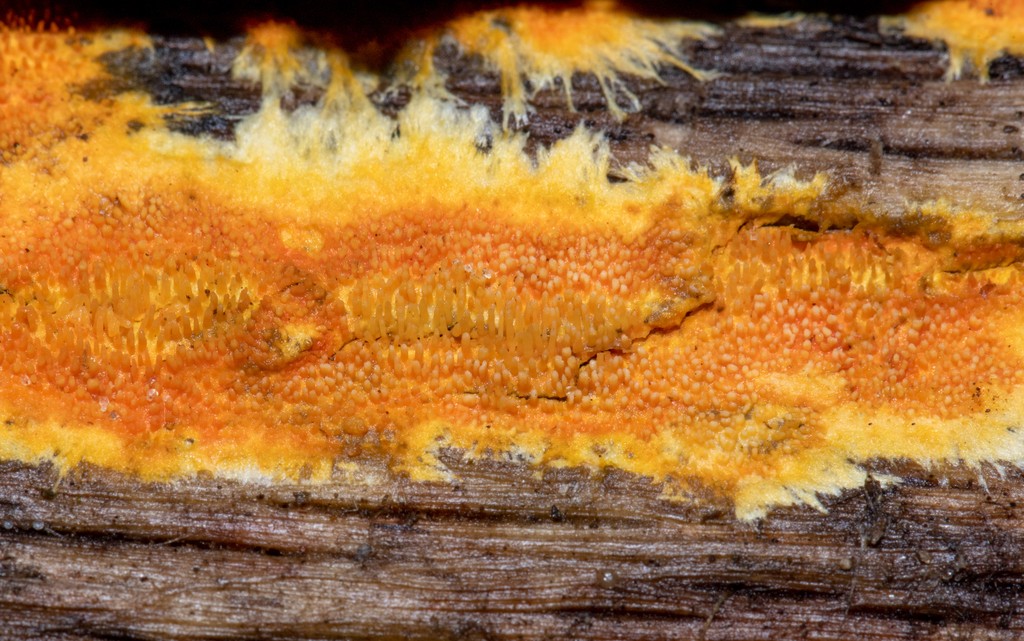Hydnophlebia
Scientific name: Hydnophlebia
Hydnophlebia
Scientific name: Hydnophlebia
 Photo By alan_rockefeller , used under CC-BY-4.0 /Cropped and compressed from original
Photo By alan_rockefeller , used under CC-BY-4.0 /Cropped and compressed from original Description
Hydnophlebia is a fascinating group of fungi often found growing on decaying wood. They play a crucial role in forest ecosystems by breaking down tough plant materials, which helps recycle nutrients back into the soil. This group exhibits a variety of unique textures on their surfaces, often forming crust-like or resupinate structures. Their ability to decompose lignin, a complex organic polymer, showcases their importance in maintaining the health of wooded habitats.
Species of Hydnophlebia
Scientific Classification
Phylum
Club fungi Class
Mushroom-forming fungi Order
Shelf fungi Family
Meruliaceae Genus
Hydnophlebia